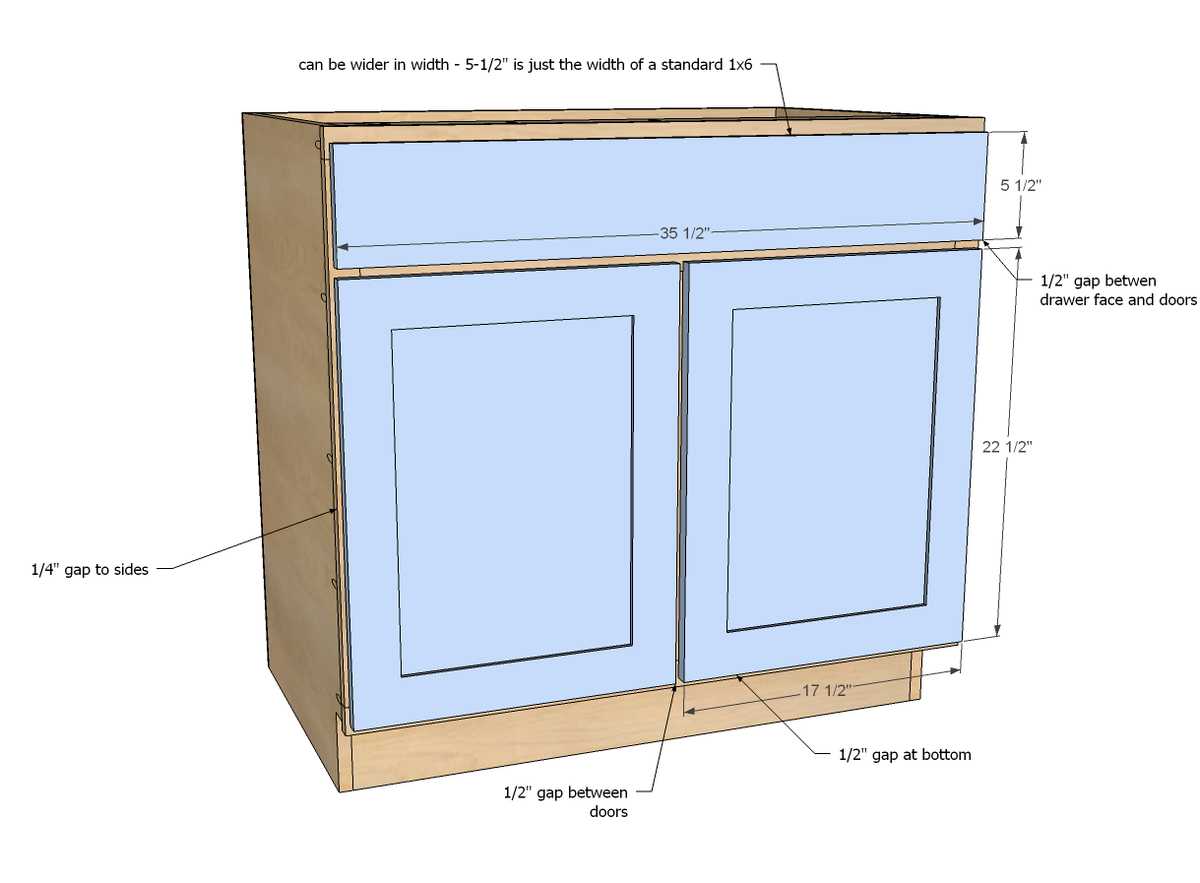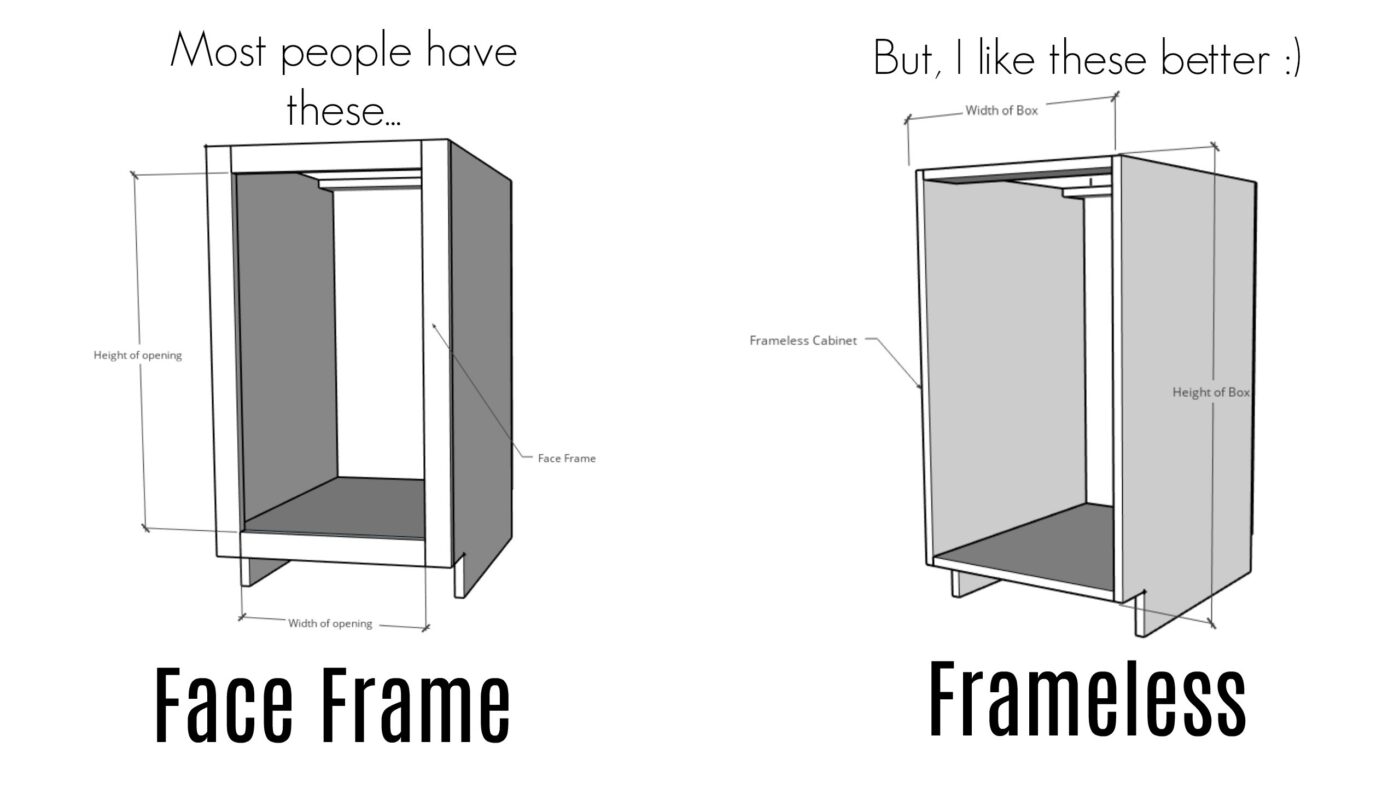Causes of Gaps Between Cabinet Doors

Gaps between cabinet doors are a common problem that can detract from the aesthetics and functionality of your kitchen or bathroom. These gaps can be caused by a variety of factors, including the material, construction, and installation of the cabinet doors, as well as environmental factors such as temperature and humidity.
Impact of Cabinet Door Material, Construction, and Installation
The material, construction, and installation of cabinet doors all play a role in how well they fit and stay aligned.
- Material: Wood is a natural material that expands and contracts with changes in temperature and humidity. This can lead to gaps between cabinet doors, especially if the wood is not properly dried or sealed. Solid wood doors are more prone to warping and movement than doors made from engineered wood products, such as plywood or medium-density fiberboard (MDF).
- Construction: The way cabinet doors are constructed can also affect their alignment. For example, doors with raised panels or intricate details are more likely to warp or sag over time than doors with simple, flat panels. Additionally, the type of hinges used can also affect door alignment.
- Installation: Improper installation can also lead to gaps between cabinet doors. This includes issues such as:
- The hinges not being properly aligned or adjusted
- The cabinet doors not being hung at the correct height
- The cabinet frame not being square or level
Impact of Temperature and Humidity
Temperature and humidity can also cause gaps between cabinet doors.
- Temperature: As the temperature changes, wood expands and contracts. This can cause the cabinet doors to warp or sag, leading to gaps between them. For example, a cabinet door that is installed in a room with high humidity may expand and become tight, while the same door in a dry room may contract and become loose.
- Humidity: Humidity can also affect the size and shape of cabinet doors. High humidity can cause wood to swell, while low humidity can cause it to shrink. This can lead to gaps between cabinet doors, especially if the wood is not properly sealed.
Impact of Cabinet Door Hinges
The type of hinge used can significantly impact the alignment and longevity of cabinet doors. Here’s a comparison of different hinge types:
| Hinge Type | Pros | Cons | Impact on Door Alignment |
|---|---|---|---|
| Butt Hinges | Simple, inexpensive, and easy to install. | Can be prone to sagging over time, especially on heavy doors. | May contribute to door misalignment if not properly installed or adjusted. |
| European Hinges | Stronger and more durable than butt hinges. Offer greater adjustability for fine-tuning door alignment. | More expensive than butt hinges. Require specialized drilling techniques for installation. | Provide excellent door alignment when installed correctly. |
| Self-Closing Hinges | Automatically close doors, improving convenience and reducing the risk of doors being left open. | Can be noisy if not properly adjusted. | May require careful adjustment to prevent slamming and misalignment. |
Impact of Gaps on Cabinet Functionality and Aesthetics: Gap Between Cabinet Doors

Gaps between cabinet doors can significantly impact the overall appearance and functionality of kitchen cabinets. While small gaps might seem insignificant, they can create a range of issues that affect both the aesthetic appeal and the practical use of cabinets.
Impact on Aesthetics
Uneven gaps between cabinet doors can detract from the visual appeal of kitchen cabinets, disrupting the clean lines and symmetry that are essential for a polished look.
- Disrupted Symmetry: Uneven gaps can create an unbalanced and messy appearance, particularly when viewed from a distance. Cabinets with consistent gaps create a sense of order and visual harmony.
- Compromised Visual Appeal: Cabinets with uneven gaps can appear sloppy and poorly constructed, diminishing the overall aesthetic appeal of the kitchen.
- Reduced Visual Harmony: The presence of uneven gaps can create a jarring visual experience, distracting from the overall design of the kitchen.
Impact on Functionality
Beyond aesthetics, gaps can negatively impact the functionality of cabinets, creating practical problems that can affect daily use.
- Difficulty Opening and Closing Doors: Large gaps can make it difficult to open and close cabinet doors, leading to frustration and potential damage to the doors or surrounding cabinets.
- Compromised Storage Space: Gaps between doors can create wasted space, especially when they are large enough to allow items to fall through or become trapped.
- Dust and Debris Accumulation: Gaps between doors can allow dust and debris to accumulate inside cabinets, compromising the cleanliness and hygiene of the kitchen.
Impact on Drawer and Shelf Performance
Gaps between cabinet doors can also impact the functionality of drawers and shelves.
- Drawer Alignment Issues: Uneven gaps can lead to misaligned drawers, making them difficult to open and close smoothly.
- Shelf Stability Concerns: Gaps between doors can affect the stability of shelves, especially when heavy items are stored.
Common Aesthetic Concerns, Gap between cabinet doors
Uneven cabinet door gaps can result in several aesthetic concerns that detract from the overall visual appeal of cabinets.
- Asymmetry: Uneven gaps can create a visually unbalanced appearance, making cabinets look uneven and poorly constructed.
- Sloppiness: Gaps can give the impression of a poorly executed installation, reducing the perceived quality of the cabinets.
- Disrupted Flow: Gaps can disrupt the smooth lines and visual flow of the kitchen, creating a jarring and unpleasant visual experience.
Solutions for Addressing Gaps Between Cabinet Doors

Addressing gaps between cabinet doors is a common home improvement task. Gaps can be unsightly and affect the functionality of cabinets, leading to difficulty opening and closing doors. This section will explore various solutions to eliminate or minimize these gaps.
Adjusting Cabinet Door Hinges
Adjusting cabinet door hinges is the most common method for fixing gaps. Hinges have screws that allow for fine-tuning the door’s position.
To adjust hinges, use a screwdriver to tighten or loosen the screws on the hinge plate.
- Tightening the screws on the top hinge will pull the door closer to the cabinet frame, reducing the gap at the top.
- Loosening the screws on the top hinge will move the door away from the cabinet frame, reducing the gap at the bottom.
- Tightening the screws on the bottom hinge will pull the door closer to the cabinet frame, reducing the gap at the bottom.
- Loosening the screws on the bottom hinge will move the door away from the cabinet frame, reducing the gap at the top.
Shimming Cabinets
Shimming cabinets involves placing thin pieces of material, such as wood or plastic, between the cabinet and the wall to create a more stable base and align the cabinet frame. This method is often used when cabinets are uneven or when the walls are not perfectly plumb.
Shimming can be used to adjust the height, width, or depth of a cabinet.
- Shims are typically made of wood, plastic, or metal.
- Wood shims are available in various sizes and thicknesses.
- Plastic shims are often used for smaller adjustments.
- Metal shims are typically used for larger adjustments.
Choosing and Using Tools
Proper tools are essential for adjusting cabinet doors and hinges.
- Screwdriver: A screwdriver with a magnetic tip is recommended for easier screw handling.
- Level: A level is used to ensure that the cabinet door is properly aligned.
- Tape measure: A tape measure is used to measure the gaps between the cabinet door and the frame.
- Shims: Shims are used to adjust the position of the cabinet.
- Hammer: A hammer is used to tap the shims into place.
Step-by-Step Guide for DIY Cabinet Door Adjustment
- Identify the problem: Determine the type of gap (top, bottom, or side) and the severity of the issue.
- Gather the necessary tools: Ensure you have the appropriate tools, such as a screwdriver, level, tape measure, and shims.
- Adjust the hinges: Using a screwdriver, tighten or loosen the screws on the hinge plates to adjust the door’s position.
- Check the alignment: Use a level to ensure that the cabinet door is properly aligned.
- Shimming (if necessary): If the gaps persist after adjusting the hinges, use shims to adjust the cabinet’s position.
- Secure the shims: Use a hammer to tap the shims into place.
- Re-check the alignment: Ensure the door is properly aligned and that the gaps have been eliminated or minimized.
A tiny gap between cabinet doors might seem insignificant, but it can make a big difference in the overall look of your collection. If you’re a serious card player, consider a wooden playing cards cabinet to store your prized decks.
These cabinets are designed to keep your cards safe and organized, and they often have tight-fitting doors that prevent dust and moisture from damaging your collection. So, whether you’re just starting out or you’re a seasoned collector, a little attention to detail, like the gap between cabinet doors, can go a long way.
Those annoying gaps between cabinet doors can really bug you, especially if you’re aiming for a sleek, modern look. Before you start pulling out the wood filler, though, consider whether you want to paint your cabinets. If you’re looking for a fresh start, can you paint over stained wood cabinets ?
It’s totally possible, and you might be surprised at how easy it is. Once you’ve got the paint job done, those gaps might not even bother you anymore!
